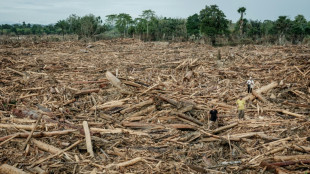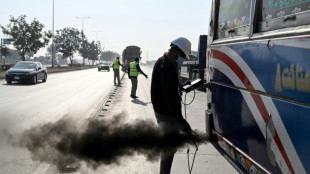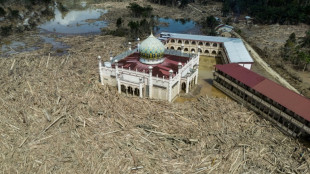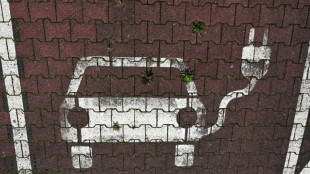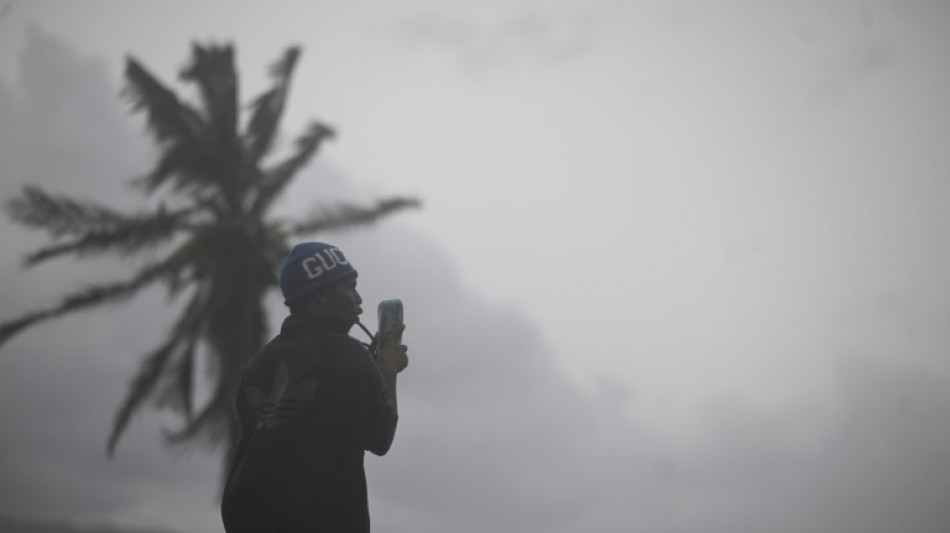
| RBGPF | -4.49% | 77.68 | $ | |
| CMSC | -0.13% | 23.27 | $ | |
| RYCEF | 2.01% | 14.9 | $ | |
| SCS | 0.12% | 16.14 | $ | |
| NGG | 1.47% | 76.05 | $ | |
| GSK | 1.1% | 49.355 | $ | |
| VOD | 1.06% | 12.725 | $ | |
| RELX | 1.7% | 41.08 | $ | |
| AZN | 1.93% | 91.598 | $ | |
| RIO | 0.12% | 75.75 | $ | |
| CMSD | 0.51% | 23.37 | $ | |
| JRI | 0.25% | 13.5999 | $ | |
| BCC | -0.78% | 75.92 | $ | |
| BCE | 0.41% | 23.491 | $ | |
| BTI | 0.91% | 57.625 | $ | |
| BP | -0.1% | 35.225 | $ |
Fear of mass destruction in Jamaica as Hurricane Melissa churns in

Brutal winds and heavy rains lashed Jamaica on Monday ahead of Hurricane Melissa unleashing what the prime minister warned could be a massively destructive storm -- the island's most violent on record.
Melissa was charting a painstakingly slow path through the Caribbean as a monster Category 5 storm.
Melissa has already been blamed for at least four deaths in Haiti and the Dominican Republic.
Its heavy rains combined with intense winds -- Melissa's maximum speeds are 175 miles (280 kilometers) per hour, the US National Hurricane Center (NHC) said in its latest update -- could wreak devastation on the scale of historic hurricanes including 2017's Maria or 2005's Katrina.
Those massive storms, which have grown increasingly common as the climate warms, left indelible impacts on Puerto Rico and the US city of New Orleans.
Jamaican Prime Minister Andrew Holness said the island's western end faced the worst.
"I don't believe there is any infrastructure within this region that could withstand a Category 5 storm, so there could be significant dislocation," he told CNN.
But despite pleas to evacuate, many residents in Jamaica were staying put.
"I am not moving. I don't believe I can run from death," Roy Brown, speaking from the historic seaside area Port Royal in Kingston, told AFP.
The plumber and tiler cited poor conditions and bad past experiences at government hurricane shelters for not wanting to flee.
Fisherwoman Jennifer Ramdial echoed that view, also adding: "I just don't want to leave."
Holness, said evacuation was about "the national good of saving lives."
"You have been warned. It's now up to you to use that information to make the right decision," he said during a briefing.
- 'Catastrophic' -
Jamaica was expected to see deteriorating conditions through Monday night, with landfall expected early Tuesday.
Part of Melissa's punch stems from its slow pace: it is lumbering along slower than most people walk, at just three miles per hour or less.
That means areas in its path could endure punishing conditions for far longer than during most hurricanes.
The NHC warned of "catastrophic" flash flooding, landslides and destructive winds that could cause lengthy power and communications outages, along with "extensive infrastructural damage."
Up to 40 inches (about a meter) of rainfall were forecast, with deluges expected to bring flash flooding and landslides to Jamaica as well as Haiti, the Dominican Republic and Cuba.
Storm surge was likely along Jamaica's southern coast, with waters potentially rising some 13 feet, along with "destructive waves."
In the farming community of Flagaman in St. Elizabeth, residents hunkered down in a store.
Owner Enrico Coke said he opened his place for fear that his neighbors had nowhere to go: "I'm concerned about farmers, the fishermen will be suffering after this."
"We'll need help as soon as possible, especially water for the people."
- Dangerous flooding -
After pummeling Jamaica, Melissa was forecast to head north and cross over eastern Cuba on Tuesday night, while continuing to bring rain and heavy winds to Haiti and the Dominican Republic.
The storm had already left tragic consequences.
A 79-year-old man was found dead in the Dominican Republic after being swept away in a stream, officials there said Saturday. A 13-year-old boy was missing.
In Haiti, the civil protection agency reported the deaths of three people in storm conditions.
Meteorologist Kerry Emanuel told AFP a warming climate was causing more storms to rapidly intensify as Melissa did, and especially raises the potential for enormous rains.
"Water kills a lot more people than wind," he told AFP.
The last major hurricane to impact Jamaica was Beryl in July 2024 -- an abnormally strong storm for the time of year.
"Human-caused climate change is making all of the worst aspects of Hurricane Melissa even worse," said climate scientist Daniel Gilford.
Q.Taylor--SFF

 London
London

 Manchester
Manchester
 Glasgow
Glasgow
 Dublin
Dublin
 Belfast
Belfast
 Washington
Washington
 Denver
Denver
 Atlanta
Atlanta
 Dallas
Dallas
 Houston Texas
Houston Texas
 New Orleans
New Orleans
 El Paso
El Paso
 Phoenix
Phoenix
 Los Angeles
Los Angeles
